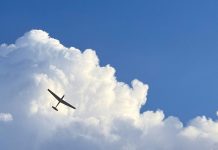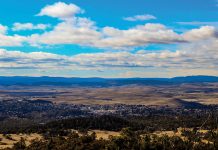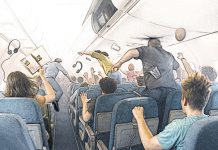Bob Hoover, described by aviation pioneer, Jimmy Doolittle, as ‘the greatest stick and rudder pilot who ever lived’, died yesterday of natural causes, aged 94.
Hoover’s prodigious piloting talent saw him fly aerobatics in a range of unlikely aircraft, including a Rockwell Shrike Commander. Hoover became famous for an ‘energy management’ aerobatic routine in the high-wing, light piston twin that culminated in an engine-out landing, and, at some airports an unpowered ground roll back to the ramp. On at least one occasion he poured a glass of tea while making a barrel roll. Unassuming and bottle-shouldered, Hoover possessed a distinctly unheroic country-boy demeanour. He reinforced this persona by performing his aerobatics while wearing a business suit topped with a straw hat, and on one occasion when the ramp at an airfield saw the Shrike Commander roll to a stop sooner than expected, he was not too proud to get out and push it the last few metres.
Robert A. Hoover, known to all as Bob, was born on 24 January, 1922 in Nashville, Tennessee, US. He learned to fly as a teenager, paying $2 for each 15-minute lesson. He began flying aerobatics as a way of hardening his stomach against airsickness, which had bedevilled him during training. During World War II he flew a British-made Spitfire with the US Army Air Force 52nd Fighter group, and was shot down over southern France. He escaped from prison camp and commandeered a German Focke-Wulf 190, which he flew to the Netherlands, narrowly escaping being lynched by Dutch civilians as a presumed German pilot.
After the war he became an air force test pilot and flew a chase aircraft for Chuck Yeager’s first supersonic flight. As a civilian test pilot, he taught dive-bombing techniques in the F-86 Sabre during the Korean War, and flew on bombing missions. In civilian life he began flying a P-51 Mustang at air shows and acted for many years as the starter pilot at the Reno air races.
The US Federal Aviation Administration revoked his medical certificate in 1992, but Hoover was able to pass the tests and exams for an Australian commercial pilot licence issued by CASA’s predecessor, the Civil Aviation Authority. His US licence was reinstated in 1995. He retired from air show performances in1999, and gave up flying, aged 85, in 2007.
Bob Hoover survived 17 crashes and emergencies during his test-flying career and received many awards, ranging from a US Distinguished Flying Cross to the Smithsonian Institution’s National Air and Space Museum Trophy. His name will live on in at least one aspect. The Hoover nozzle and Hoover ring are a system that prevents a jet fuel nozzle from fitting into the fuel filler of an aircraft designed to run on avgas piston-engine fuel.





Comments are closed.